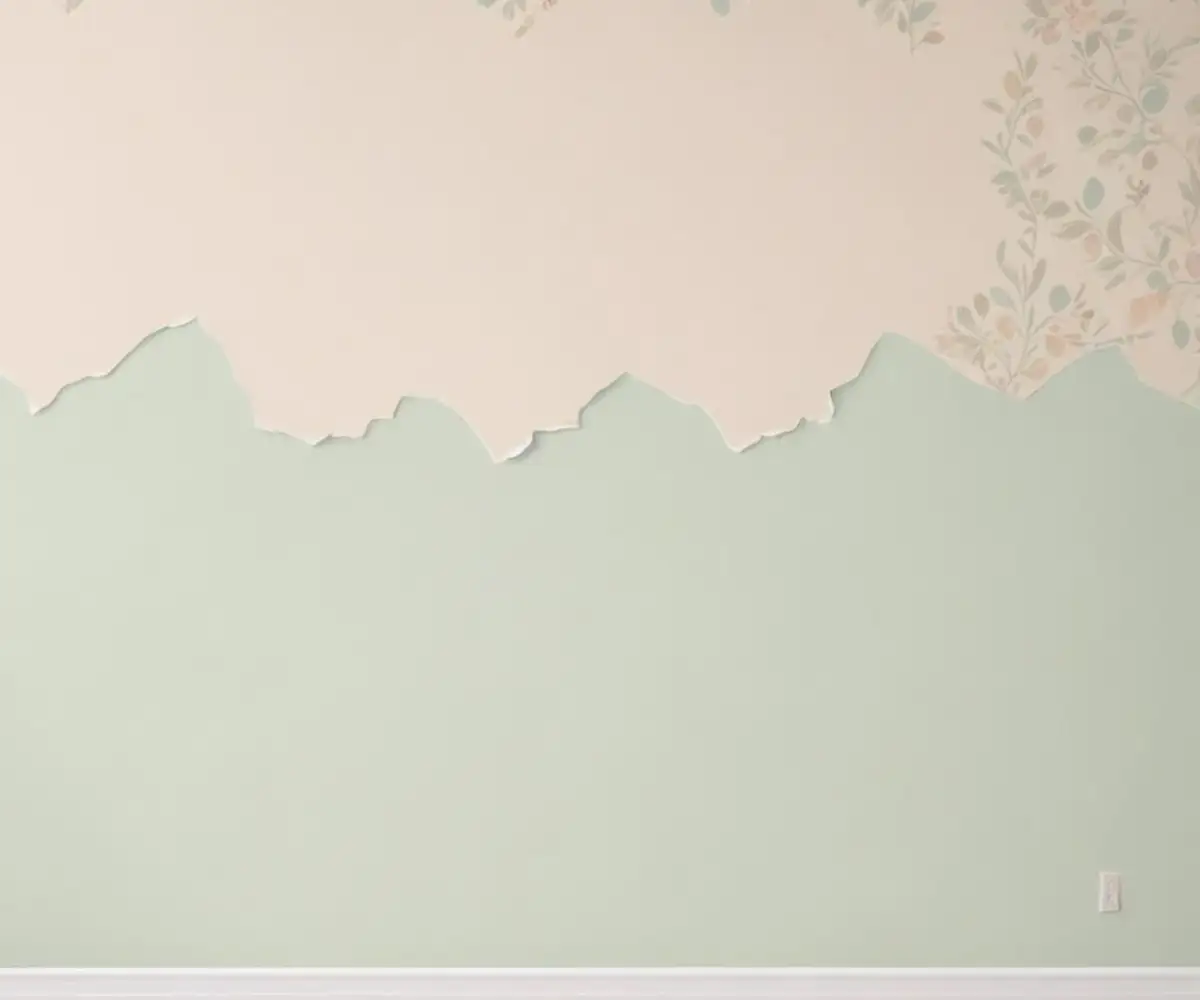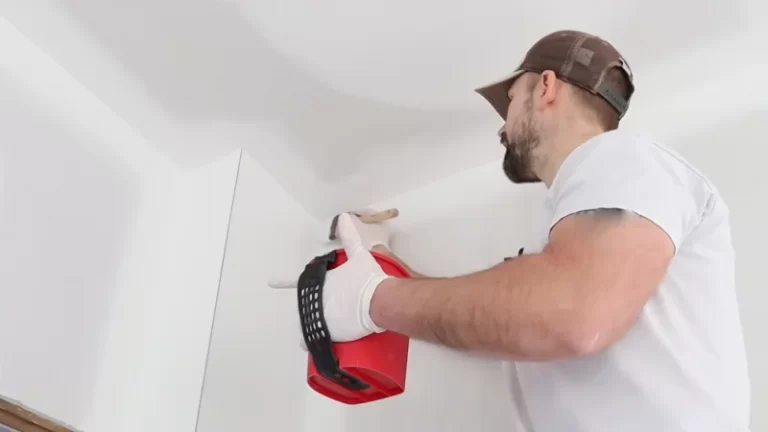Thin Sheetrock Over Wallpaper: Your Secret to Flawless Walls
That outdated, peeling, or downright ugly wallpaper has to go. You know it, but the thought of the project makes you shudder. The endless scoring, soaking, scraping, and the inevitable mess can be a homeowner’s worst nightmare, especially when the wallpaper was applied directly to unprimed drywall.
This is a common renovation horror story. Stripping old wallpaper often leads to gouged, damaged walls that then require extensive patching and sanding before you can even think about priming and painting. There is, however, a smarter, faster, and often better solution: installing a thin layer of sheetrock directly over the old wallpaper.
You'll Learn About
Why Hiding Wallpaper is a Superior Strategy
Covering old wallpaper with a fresh layer of drywall isn’t about cutting corners; it’s about achieving a superior result with less hassle. This method bypasses the messy, labor-intensive process of removal and provides a brand-new, perfectly smooth surface.
The result is a wall that is pristine and ready for any modern finish you desire. Furthermore, you avoid the risk of damaging the underlying wall, which is especially common in older homes where wallpaper was applied without proper wall preparation.
A Stronger, Quieter Wall
An often-overlooked benefit of this technique is the enhancement of your wall’s structural integrity. While a thin layer of drywall won’t add significant structural support, it does add a degree of rigidity and durability to the existing surface.
This additional layer also provides a modest but noticeable improvement in sound dampening. It helps to reduce ambient noise transfer between rooms, creating a quieter and more peaceful living environment.
Choosing the Right Thin Sheetrock
The key to this method is using “thin” drywall, which is lighter and easier to work with than standard 1/2-inch or 5/8-inch sheets. Your primary choices will be 1/4-inch or 3/8-inch drywall.
Understanding 1/4-Inch Drywall
Quarter-inch drywall is the most common choice for overlay projects. Its thin profile and flexibility make it ideal for covering existing surfaces without adding excessive bulk. It’s lightweight, making it easier for a single person to handle and install.
When to Consider 3/8-Inch Drywall
While 1/4-inch is the standard, 3/8-inch drywall offers more rigidity. This can be beneficial if the original wall has minor waves or imperfections. It’s slightly heavier and less flexible but provides a more robust and impact-resistant surface.
| Feature | 1/4-Inch Drywall | 3/8-Inch Drywall |
|---|---|---|
| Best Use Case | Covering stable, relatively flat existing walls. | Covering walls with minor imperfections or for slightly better durability. |
| Weight | Lighter, easier to handle for DIY projects. | Heavier, may require two people to hang. |
| Flexibility | Very flexible, good for slightly curved surfaces. | Less flexible, provides a more rigid surface. |
| Cost | Generally less expensive per sheet. | Slightly more expensive per sheet. |
| Impact on Trim | Minimal buildup around trim and outlets. | Requires more significant adjustments to trim and electrical boxes. |
The Complete Step-by-Step Installation Guide
Achieving a professional finish requires careful preparation and execution. Following these steps methodically will ensure your new walls look perfect.
Step 1: Prepare the Existing Wall Surface
While you are covering the wallpaper, you can’t ignore the wall’s condition. Start by scraping away any completely loose or peeling sections of wallpaper. You need a reasonably sound surface for the new drywall to rest against.
Next, it is absolutely critical to seal the old wallpaper. The moisture from drywall mud can reactivate the old wallpaper adhesive, causing it to bubble and compromise the new drywall finish. Apply a coat of a quality shellac-based or oil-based primer over the entire wallpapered surface to create a moisture barrier.
Step 2: Locate and Mark Wall Studs
Your new drywall must be secured to the wall studs, not just the old wall surface. Use a reliable stud finder to locate each stud and mark its position on the ceiling and floor. Snap a vertical chalk line to create a clear guide for your screws.
Step 3: Account for Electrical Boxes
Adding a layer of drywall will recess your outlets and switches, creating a safety hazard. You must use electrical box extenders (also known as “goof rings”) to bring them flush with the new wall surface. This is a simple but non-negotiable step to ensure your installation is up to code.

Step 4: Measure, Cut, and Hang the Drywall
Measure your wall space carefully and cut the drywall sheets to size using the standard “score and snap” method with a utility knife. When hanging the sheets, use drywall screws that are long enough to penetrate the new drywall, the old wall, and at least 3/4-inch into the studs. For 1/4-inch drywall over a 1/2-inch wall, 1 5/8-inch screws are typically required.
Step 5: Master the Art of Taping and Mudding
This is where precision matters most. Use paper tape for the strongest, smoothest joints. Apply a thin coat of joint compound, embed the tape, and then apply several additional thin coats, feathering the edges wider with each pass. Choosing the right joint compound is critical; some set faster than others. Understanding the difference between products like in our Easy Sand 45 vs 90 guide can save you from a costly mistake.
Mistakes to Avoid for a Flawless Finish
Even a straightforward project can be derailed by common errors. Be mindful of these potential pitfalls to keep your project on track.
The Perils of a “Wavy” Wall
Thin drywall is less forgiving of imperfections than its thicker counterparts. To avoid a wavy appearance, you must feather your joint compound out much wider than you might be used to—at least 12 inches on each side of a seam. This technique creates a gradual transition that tricks the eye into seeing a perfectly flat surface.
Improperly secured drywall can also shift over time. This movement can sometimes manifest in other areas, such as causing a vertical crack in crown molding as the structure settles.
Skipping Critical Prep Work
Never skip priming the old wallpaper or using outlet extenders. These steps are fundamental to the longevity and safety of your project. Failure to prime can lead to bubbling and failure of the new finish, while ignoring electrical extenders is a fire hazard.
Advanced Considerations and Upgrades
Once you’ve mastered the basics, consider how this project impacts the rest of the room and what other upgrades you might tackle at the same time.
Dealing with Trim and Baseboards
Your existing door casings, window trim, and baseboards will now be recessed. You have two options: remove and reinstall them on top of the new drywall, or add thin strips of wood called extension jambs to the existing window and door frames to bring them flush before reinstalling the trim.
While your walls are undergoing a major upgrade, it can be the perfect time to consider other enhancements. For example, if you’re working in a kitchen or bathroom, exploring radiant floor heating options by reviewing a Nuheat vs. Ditra-Heat comparison could be a valuable next step in your renovation journey.
Is This a Feasible DIY Project?
Installing thin sheetrock is well within the capabilities of a determined DIYer. The key requirements are patience, attention to detail, and the right tools. If you are inexperienced with taping and mudding, practice on a scrap piece first. However, if the project is large or you’re on a tight deadline, hiring a professional can be a worthwhile investment.
The Smart Choice for Modern Walls
Don’t let the dread of wallpaper removal hold your home’s style hostage. Installing thin sheetrock over outdated wallpaper is an efficient, clean, and highly effective method for achieving the flawless, modern walls you want.
By bypassing the messy and destructive process of stripping, you not only save time and effort but also create a superior, more durable surface. It’s a transformative project that delivers a high-end result, making it one of the smartest renovation hacks available.
Frequently Asked Questions
Why would I install thin sheetrock over wallpaper?
Installing thin sheetrock is often easier and less labor-intensive than removing old wallpaper, especially if the wallpaper was applied directly to unprimed drywall. This method provides a fresh, smooth surface for paint or new wallpaper and avoids the potential damage to the underlying wall that can occur during wallpaper removal.
What is the best thickness for the new drywall?
The most commonly recommended thickness for this application is 1/4-inch drywall. In some cases, 3/8-inch drywall may also be used, particularly if the existing wall is in poor condition. These thinner sheets are lighter and easier to work with than standard 1/2-inch drywall.
Do I need to do any prep work to the wallpapered wall first?
Yes, some preparation is still necessary. You should remove any loose or peeling sections of wallpaper to create a relatively flat surface. It’s also important to locate and mark the wall studs to ensure the new drywall is securely fastened.
Will I have any issues with my existing trim and outlets?
Yes, installing another layer of drywall will affect your existing trim and electrical outlets. You will likely need to remove and reinstall your baseboards and door/window trim. Electrical outlet and switch boxes will also need to be extended to be flush with the new drywall surface.
Can I just paint over the wallpaper instead?
While painting over wallpaper is an option, it can sometimes lead to bubbling or peeling, especially if the wallpaper is not well-adhered. Applying a thin layer of drywall ensures a more durable and long-lasting finish, free of the texture and seams of the underlying wallpaper.

